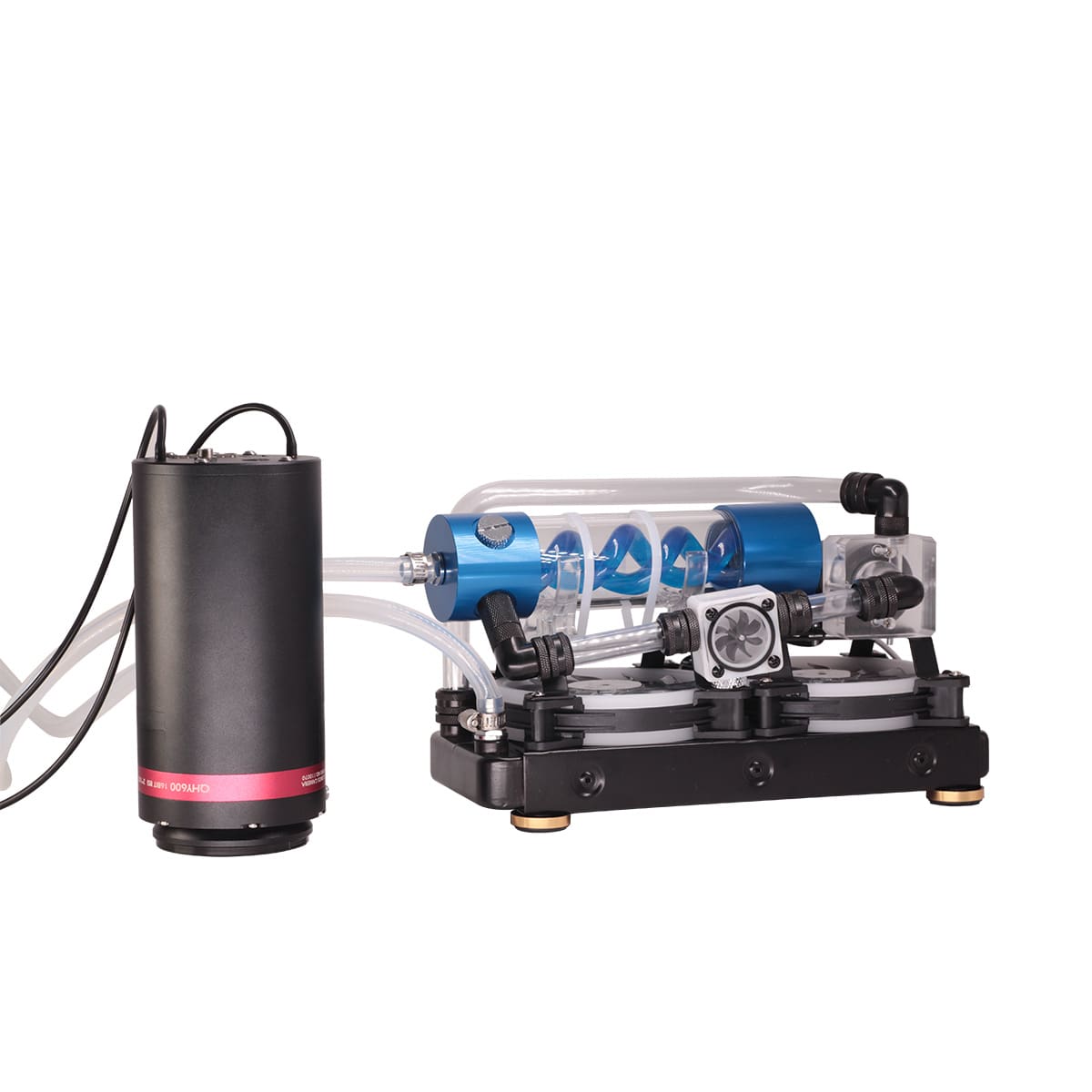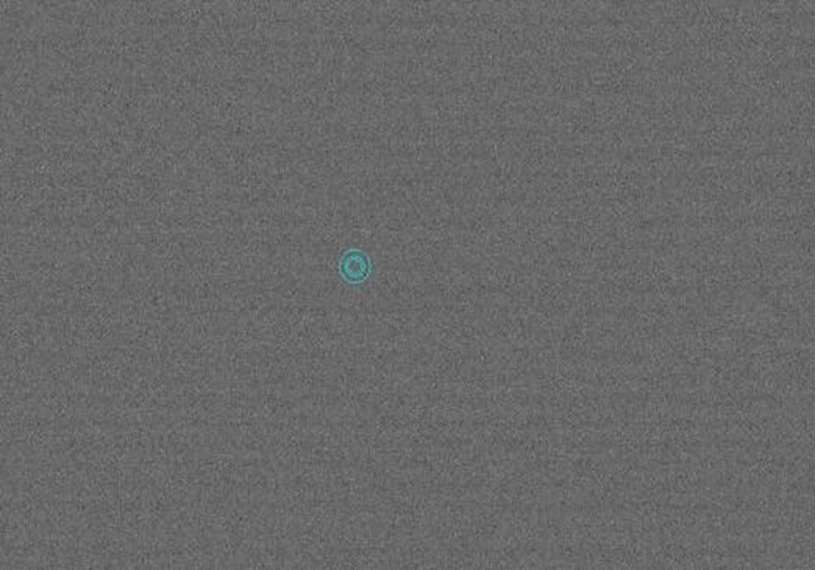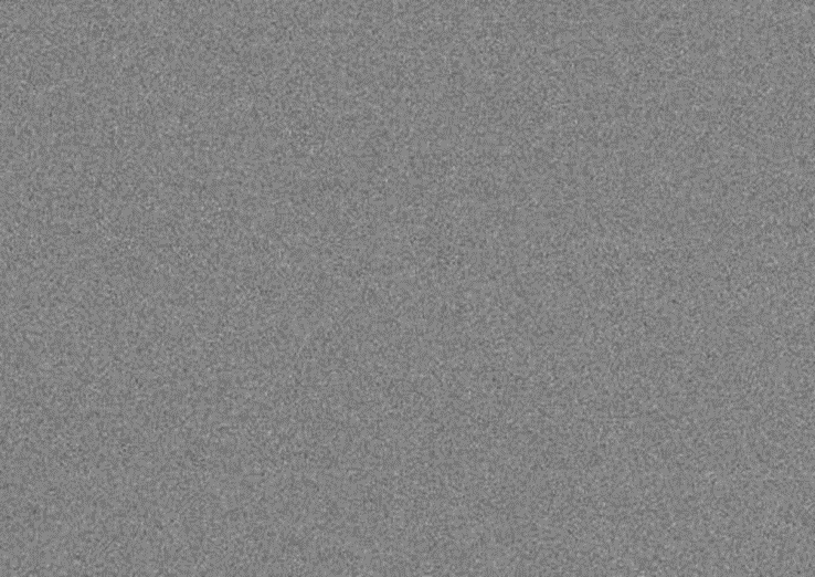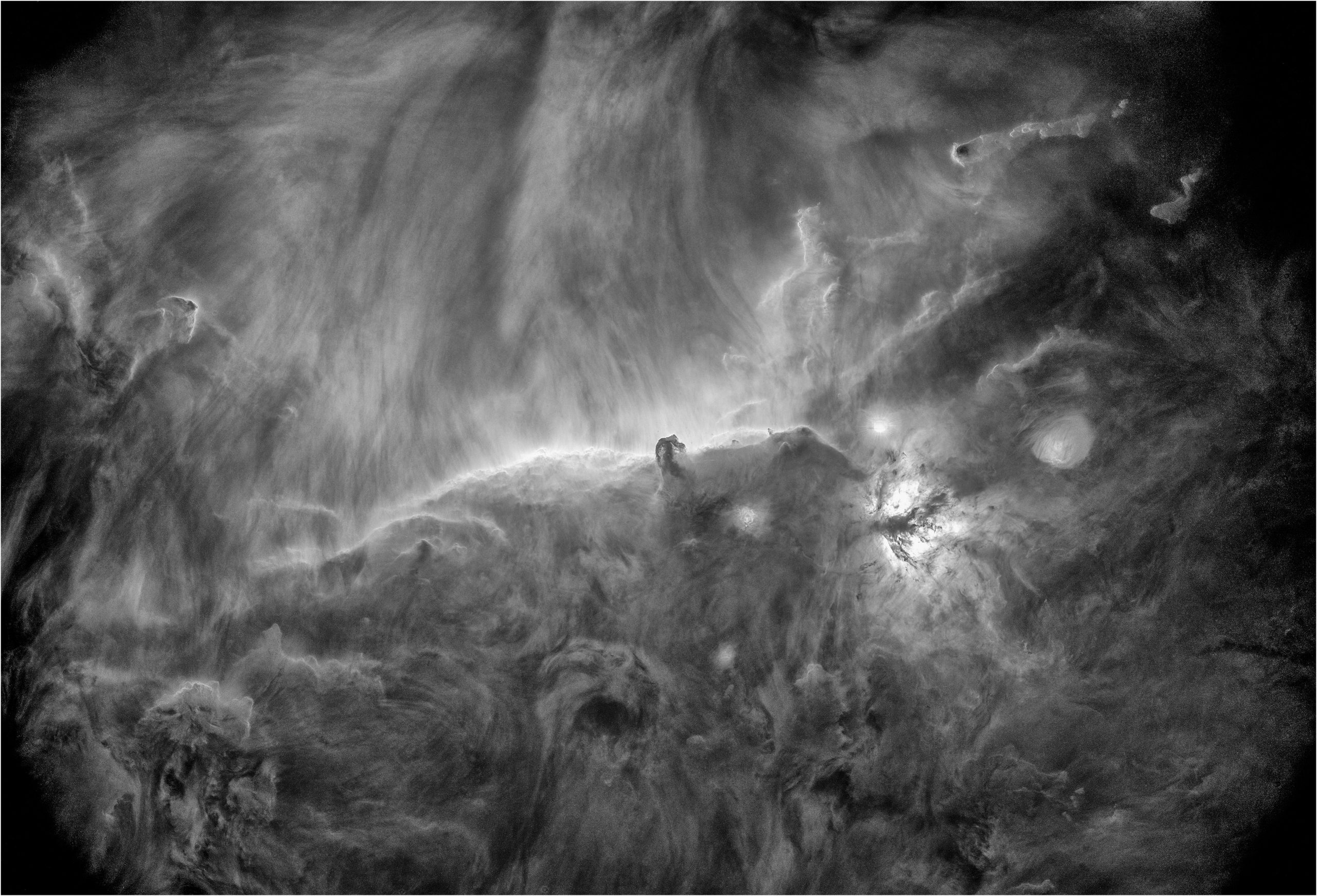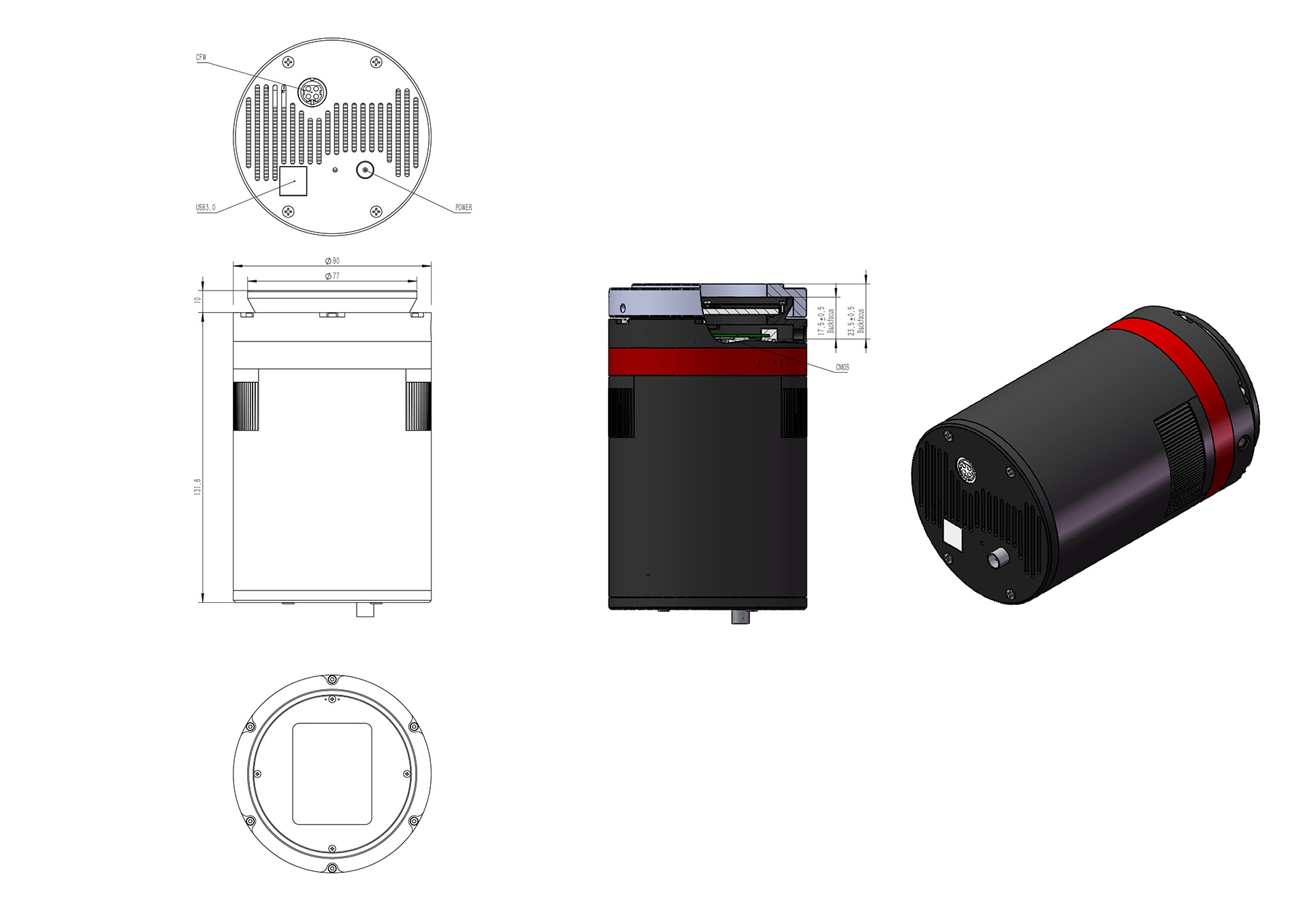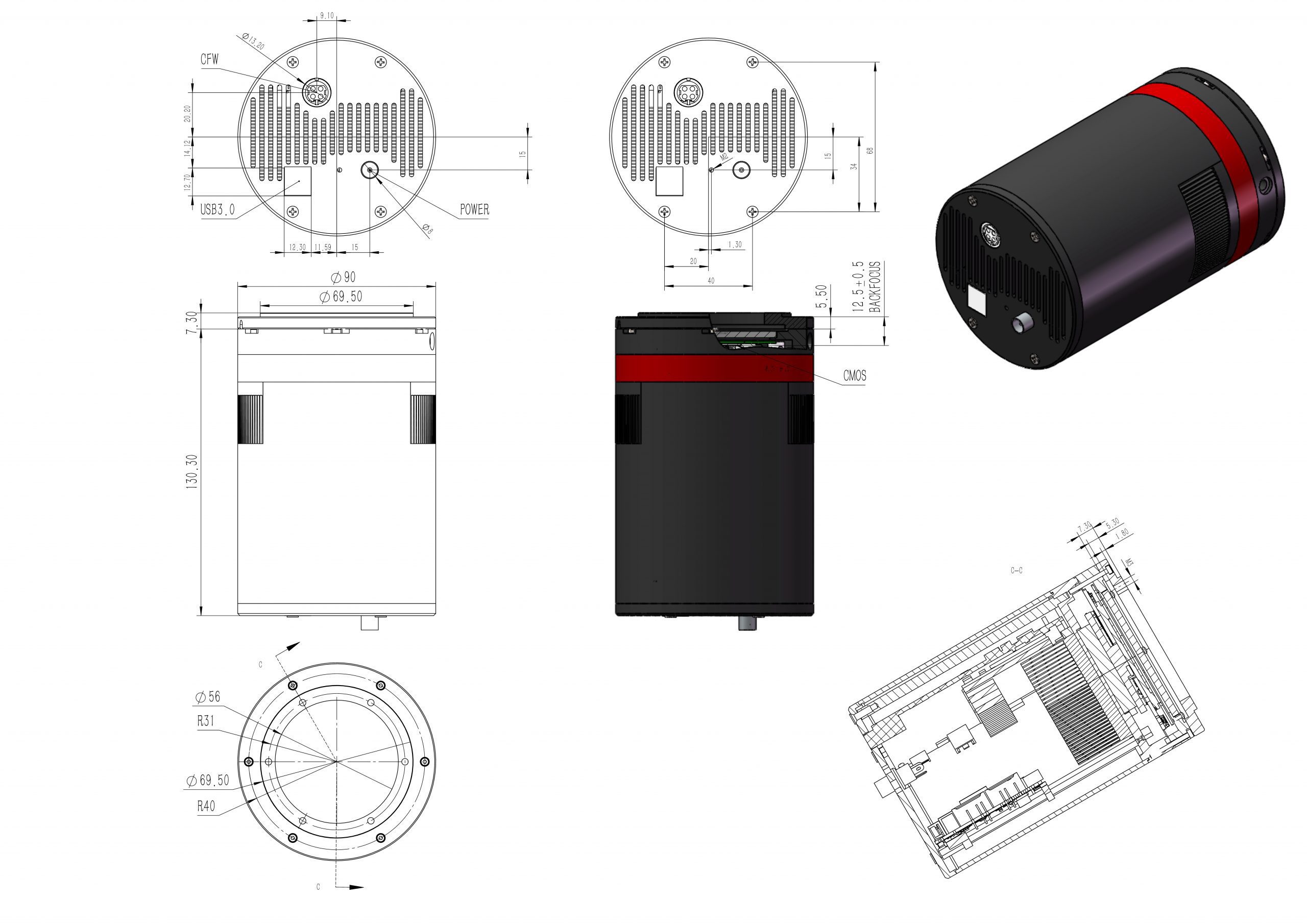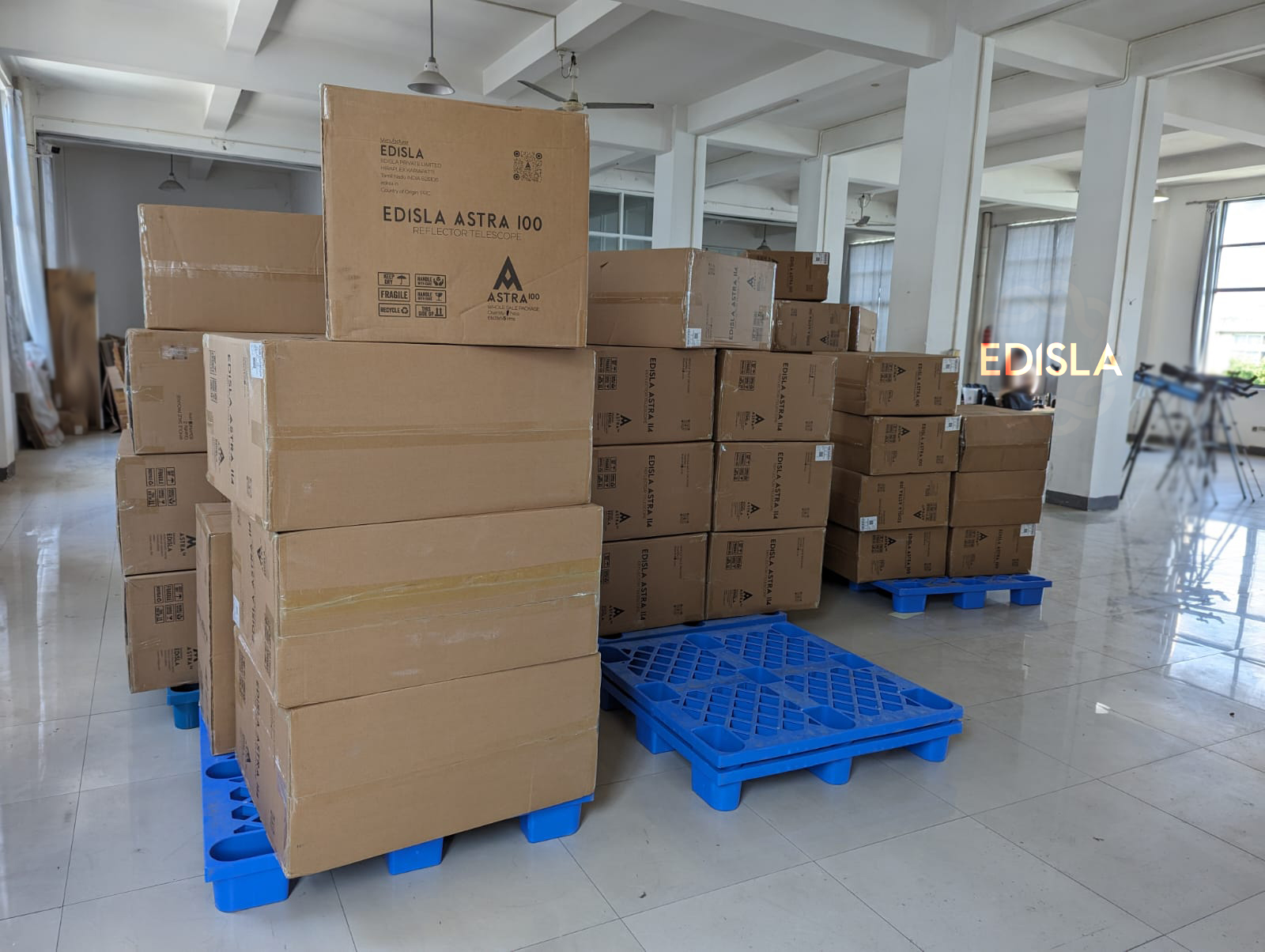qhyccd
QHY600PH Series Astronomy Camera
QHY600PH Series Astronomy Camera
Out of stock
Couldn't load pickup availability
- RazorPay Secure Payment & EMI
- All India Fast & Free Shipping
- Replacement Guarantee
With the advantage of low readout noise and high-speed readout, CMOS technology has revolutionized astronomical imaging. A monochrome, back-illuminated, high-sensitivity, astronomical imaging camera is the ideal choice for astro-imagers. The QHY600 Series uses SONY IMX455, a BSI full frame (35mm format) sensor with 3.76um pixels and native 16-bit A/D. This sensor is available in both monochrome and color versions. The QHY600 Series ends the days of non-16bit cooling CMOS cameras and it ends the days non-full frame (and larger) monochrome cooling CMOS cameras.
- Extremely low dark current (0.002e/p/s@-20C) using SONY’s Exmor BSI CMOS technology.
- Zero amplifer glow.
- Only one electron of read noise at high gain and full resolution and 4FPS readout speed. One electron of read noise means the camera can achieve a SNR>3 at only 4 to 6 photons. This is perfect performance when conditions are photon limited, i.e., short exposures, narrow band imaging, etc., making this large area sensor ideal for sky surveys, time domain astronomy, fluorescence imaging, DNA sequencing and microscopy.
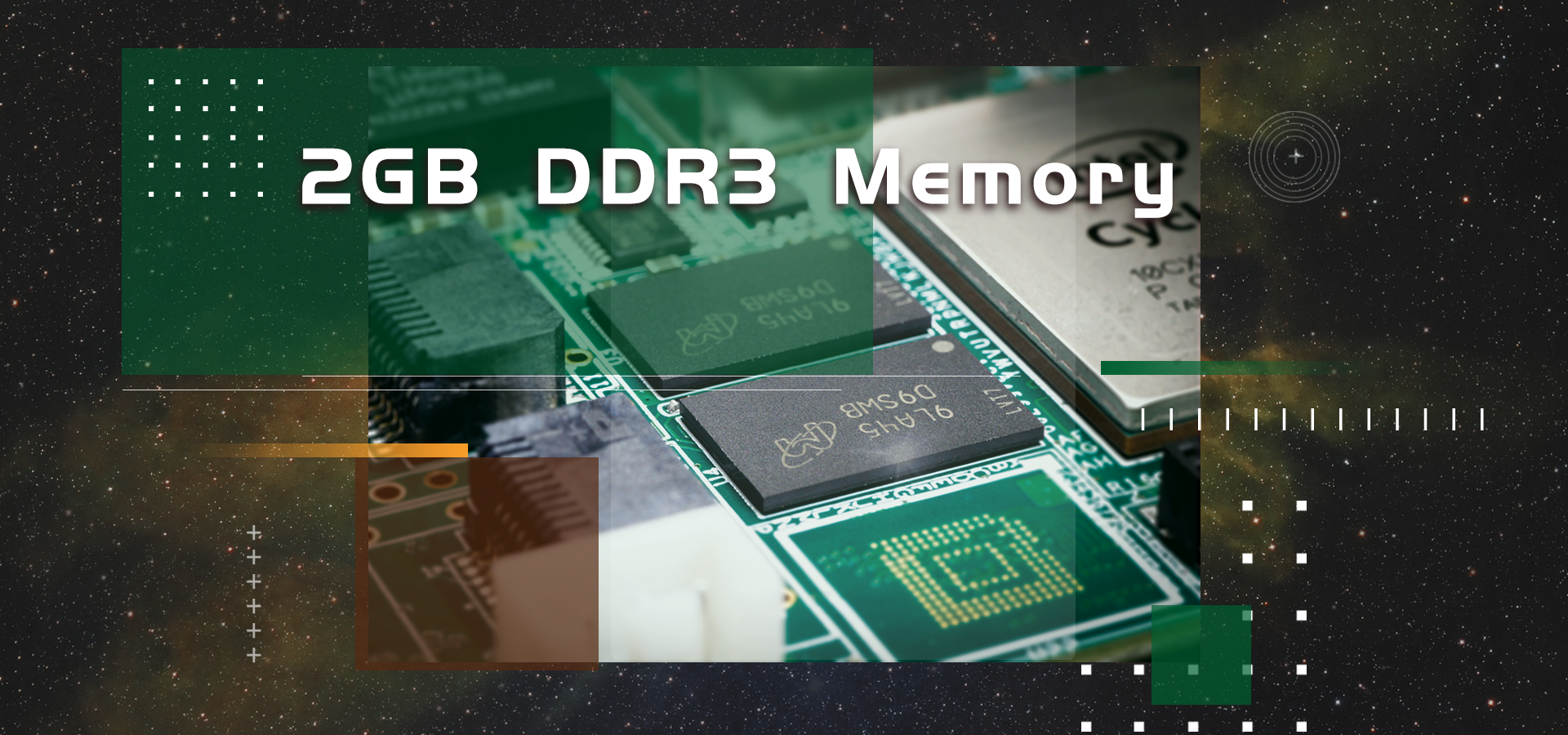 In order to provide smooth uninterrupted data transfer of the entire 60MP sensor at high speed, the QHY600 Series (except QHY600M-PH L) have 2GB DDR3 image buffer. The pixel count of the latest generation of CMOS sensors is very high resulting in greater memory requirements for temporary and permanent storage. When using some computers that do not have fast processors or have poor support for USB 3.0, the computer can’t transfer high-speed data well, and the data is often lost. The DDR can buffer a lot of image data and send it to the computer. Even if the USB 3.0 transmission frequently gets suspended, it will ensure that data is not lost.
In order to provide smooth uninterrupted data transfer of the entire 60MP sensor at high speed, the QHY600 Series (except QHY600M-PH L) have 2GB DDR3 image buffer. The pixel count of the latest generation of CMOS sensors is very high resulting in greater memory requirements for temporary and permanent storage. When using some computers that do not have fast processors or have poor support for USB 3.0, the computer can’t transfer high-speed data well, and the data is often lost. The DDR can buffer a lot of image data and send it to the computer. Even if the USB 3.0 transmission frequently gets suspended, it will ensure that data is not lost.
For example, the QHY600 sensor produces about 120MB of data per frame. The data band-width is also increased from the original 16-bits to the current 32-bits. Transferring such a large file sizes necessarily requires the camera to have sufficient memory. This large image buffer meets the needs of high-speed image acquisition and transmission of the new generation of CMOS, making shooting of multiple frames smoother and less stuttered, further reducing the pressure on the computer CPU.
 Native 16 bit A/D: The new Sony sensor has native 16-bit A/D on-chip. The output is real 16-bits with 65536 levels. Compared to 12-bit and 14-bit A/D, a 16-bit A/D yields higher sample resolution and the system gain will be less than 1e-/ADU with no sample error noise and very low read noise.
Native 16 bit A/D: The new Sony sensor has native 16-bit A/D on-chip. The output is real 16-bits with 65536 levels. Compared to 12-bit and 14-bit A/D, a 16-bit A/D yields higher sample resolution and the system gain will be less than 1e-/ADU with no sample error noise and very low read noise.
 BSI: One benefit of the back-illuminated CMOS structure is improved full well capacity. In the back- illuminated sensor the light is allowed to enter the photosensitive surface from the reverse side. In this case the sensor’s embedded wiring structure is below the photosensitive layer. As a result, more incoming photons strike the photosensitive layer and more electrons are generated and captured in the pixel well. This ratio of photon to electron production is called quantum efficiency. The higher the quantum efficiency the more efficient the sensor is at converting photons to electrons and hence the more sensitive the sensor is to capturing an image of something dim.
BSI: One benefit of the back-illuminated CMOS structure is improved full well capacity. In the back- illuminated sensor the light is allowed to enter the photosensitive surface from the reverse side. In this case the sensor’s embedded wiring structure is below the photosensitive layer. As a result, more incoming photons strike the photosensitive layer and more electrons are generated and captured in the pixel well. This ratio of photon to electron production is called quantum efficiency. The higher the quantum efficiency the more efficient the sensor is at converting photons to electrons and hence the more sensitive the sensor is to capturing an image of something dim.
 TRUE RAW Data: In the DSLR implementation there is a RAW image output, but typically it is not completely RAW. Some evidence of noise reduction and hot pixel removal is still visible on close inspection. This can have a negative effect on the image for astronomy such as the “star eater” effect. However, QHY Cameras offer TRUE RAW IMAGE OUTPUT and produces an image comprised of the original signal only, thereby maintaining the maximum flexibility for post-acquisition astronomical image processing programs and other scientific imaging applications.
TRUE RAW Data: In the DSLR implementation there is a RAW image output, but typically it is not completely RAW. Some evidence of noise reduction and hot pixel removal is still visible on close inspection. This can have a negative effect on the image for astronomy such as the “star eater” effect. However, QHY Cameras offer TRUE RAW IMAGE OUTPUT and produces an image comprised of the original signal only, thereby maintaining the maximum flexibility for post-acquisition astronomical image processing programs and other scientific imaging applications.
 Zero Amplify Glow: This is also a zero amplifer glow camera.
Zero Amplify Glow: This is also a zero amplifer glow camera.
 Cooling & Anti-dew Control: In addition to dual stage TE cooling, QHYCCD implements proprietary technology in hardware to control the dark current noise. The optic window has built-in dew heater and the chamber is protected from internal humidity condensation. An electric heating board for the chamber window can prevent the formation of dew.
Cooling & Anti-dew Control: In addition to dual stage TE cooling, QHYCCD implements proprietary technology in hardware to control the dark current noise. The optic window has built-in dew heater and the chamber is protected from internal humidity condensation. An electric heating board for the chamber window can prevent the formation of dew.
 Sealing Technology: Based on almost 20-year cooled camera design experience, The QHY cooled camera has implemented the sealing control solutions. The sensor itself is kept dry with our silicon gel tube socket design for control of humidity within the sensor chamber. By the way, there’s no oil leaking.
Sealing Technology: Based on almost 20-year cooled camera design experience, The QHY cooled camera has implemented the sealing control solutions. The sensor itself is kept dry with our silicon gel tube socket design for control of humidity within the sensor chamber. By the way, there’s no oil leaking.
PH–Photographic Grade. Mainly for astrographers.
Pro–Scientific Grade. Mainly for scientific instituations. Since 2023, the Pro series have been devided to Pro I and Pro II series, the original “Pro” models will be replaced by “Pro I” models.
Pro I–Upgraded from the previous Pro series, it has 2*10G fiber interface with shorter body length.
Pro II–Based on Pro I models, it provides another two CameraLink interfaces.
M–Monochrome.
C–Colored.
L–Lite version is only available in PH Grade. Its body length becomes shorter and the built-in memory storage is 1GB instead of 2GB. Mono only.
SBFL–has a shorter back focal length.
LQ–supports liquid cooling.
Sensor Grade: All monochrome cameras (except the Lite version) are equipped with Industrial-Grade sensors, while the others are equipped with Consumer-Grade sensors.
| Grade | Body Length | Back Focal Length | Cooling Method | Buffer | 2*10g | CameraLink | Note | |
| QHY600PH L | Photographic | 123mm | 17.5+6mm(CAA) | Air Cooling | 1GB DDR3 | – | – | |
| QHY600PH | Photographic | 142mm | 17.5+6mm(CAA) | Air Cooling | 2GB DDR3 | – | – | |
| QHY600PH SBFL | Photographic | 138mm | 14.5mm | Air Cooling | 2GB DDR3 | – | – | |
| QHY600PH EB | Photographic | 185mm | 17.5+6mm(CAA) | Air Cooling | 2GB DDR3 | – | – | Discontinued |
| QHY600Pro | Scientific | 185mm | 17.5+6mm(CAA) | Air Cooling | 2GB DDR3 | Yes | – | Replaced by Pro I |
| QHY600Pro SBFL | Scientific | 181mm | 14.5mm | Air Cooling | 2GB DDR3 | Yes | – | Replaced by Pro I |
| QHY600Pro LQ | Scientific | 185mm | 17.5+6mm(CAA) | Liquid Cooling | 2GB DDR3 | Yes | – | Replaced by Pro I |
| QHY600Pro SBFL LQ | Scientific | 181mm | 14.5mm | Liquid Cooling | 2GB DDR3 | Yes | – | Replaced by Pro I |
| QHY600Pro I | Scientific | 142mm | 17.5+6mm(CAA) | Air Cooling | 2GB DDR3 | Yes | – | |
| QHY600Pro I LQ | Scientific | 142mm | 17.5+6mm(CAA) | Liquid Cooling | 2GB DDR3 | Yes | – | |
| QHY600Pro I SBFL | Scientific | 138mm | 14.5mm | Air Cooling | 2GB DDR3 | Yes | – | |
| QHY600Pro I SBFL LQ | Scientific | 138mm | 14.5mm | Liquid Cooling | 2GB DDR3 | Yes | – | |
| QHY600Pro II | Scientific | 142mm | 17.5+6mm(CAA) | Air Cooling | 2GB DDR3 | Yes | Yes | |
| QHY600Pro II LQ | Scientific | 142mm | 17.5+6mm(CAA) | Liquid Cooling | 2GB DDR3 | Yes | Yes | |
| QHY600Pro II SBFL | Scientific | 138mm | 14.5mm | Air Cooling | 2GB DDR3 | Yes | Yes | |
| QHY600Pro II SBFL LQ | Scientific | 138mm | 14.5mm | Liquid Cooling | 2GB DDR3 | Yes | Yes |
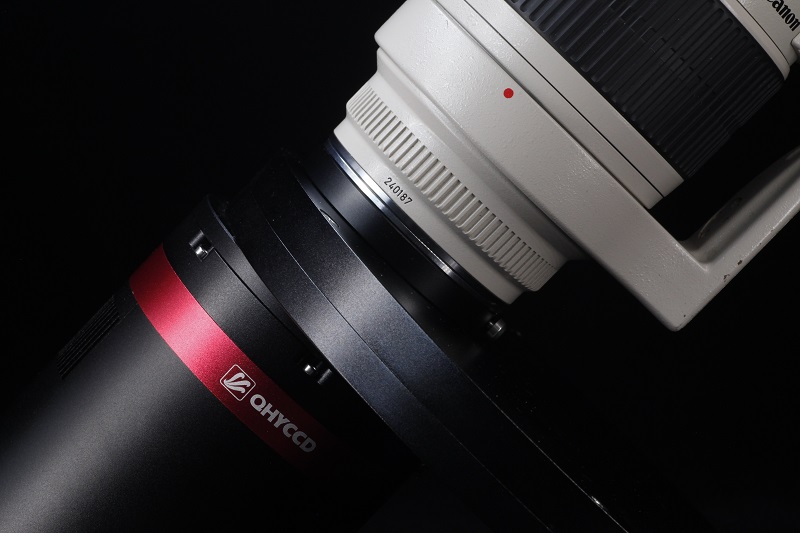 SBFL (Short back-focal length version) models are specially designed for DSLR lens users or those who has special requirment of short back focal length. This version has a special front part version which has 14.5mm B.F.L only (The B.F.L consumed equals 12.5mm when connecting QHYCFW. About the defination of “BFL Comsumed” and our adapter system please view: https://www.qhyccd.com/astronomical-camera-adapter-bfl-solution/). A model with “SBFL” suffix can easily match Canon/Nikon lens even with filter wheel. On the side of this adapter there is a 4mm hole to connect air pump through plastic pipe in case of the dewing glass when necessary.
SBFL (Short back-focal length version) models are specially designed for DSLR lens users or those who has special requirment of short back focal length. This version has a special front part version which has 14.5mm B.F.L only (The B.F.L consumed equals 12.5mm when connecting QHYCFW. About the defination of “BFL Comsumed” and our adapter system please view: https://www.qhyccd.com/astronomical-camera-adapter-bfl-solution/). A model with “SBFL” suffix can easily match Canon/Nikon lens even with filter wheel. On the side of this adapter there is a 4mm hole to connect air pump through plastic pipe in case of the dewing glass when necessary.
A model with “LQ” suffix supports Liqiud cooling. Since LQ models need customization, please contact the QHYCCD sales department. Compared to air cooling, liquid cooling offers the following advantages:
More efficient cooling. When using ambient temperature pure water for water cooling, the maximum cooling temperature is about 10 degrees Celsius lower than that of air cooling. QHYCCD is improving its support for ultra-low temperature liquid cooling.
No vibration. No matter how high-quality the fan is, it is inevitable to generate some image jitter. The water-cooling version does not have moving mechanical parts that cause camera vibration, thus avoiding negative effects on the image.
No turbulent hot air. For certain cameras that need to be installed in front of the optical system, such as Schmidt-Cassegrain telescopes, the hot air generated by air cooling systems may cause slight interference with the optical path. Water cooling does not produce this kind of impact.
Multiple Readout Modes are special for QHY 16-bit Cameras (QHY600/268/461/411). Different readout modes have different driver timing, etc., and result in different performance. See details at “Multiple Readout Modes and Curves” Part.
You may find some types of thermal noise can change with time in some back-illuminated CMOS cameras. This thermal noises has the characteristic of the fixed position of typical thermal noise, but the value is not related to the exposure time. Instead, each frame appears to have its own characteristics. The QHY600/268/461/411 use an innovative suppression technology that can significantly reduce the apparent level of such noise.
UVLO(Under Voltage Locking) is to protect the electronic device from damage caused by abnormally low voltages.
Our daily life experience tells us that the actual operational voltage of an electrical device must not significantly exceed the rated voltage, otherwise it will be damaged. For such precision equipment as cameras, long-term work at too low input voltage can also be detrimental to the working life of the camera, and may even make some devices, such as power manager, burn up due to long-term overload. In the all-in-one driver and SDK after 2021.10.23 stable version, the camera will give a warning when the input voltage of the camera is below 11V.
It is common behavior for a CMOS sensor to contain some horizontal banding. Normally, random horizontal banding can be removed with multiple frame stacking so it does not affect the final image. However, periodic horizontal banding is not removed with stacking so it may appear in the final image. By adjust the USB traffic in Single Frame mode or Live Frame mode, you can adjust the frequency of the CMOS sensor driver and it can optimize the horizontal banding appeared on the image. This optimized is very effective to remove the periodic banding in some conditions.
A typical Periodic Horizontal Noise under certain USB_TRAFFIC values.
After Adjusting the USB Traffic to avoid the periodic horizontal noise.
The camera is designed to use the +12V to reboot the camera without disconnecting and reconnecting the USB interface. This means that you can reboot the camera simply by shutting down the +12V and then powering it back on. This feature is very handy for remote controlling the camera in an observatory. You can use a remotely controlled power supply to reboot the camera. There is no need to consider how to reconnect the USB in the case of remote control.
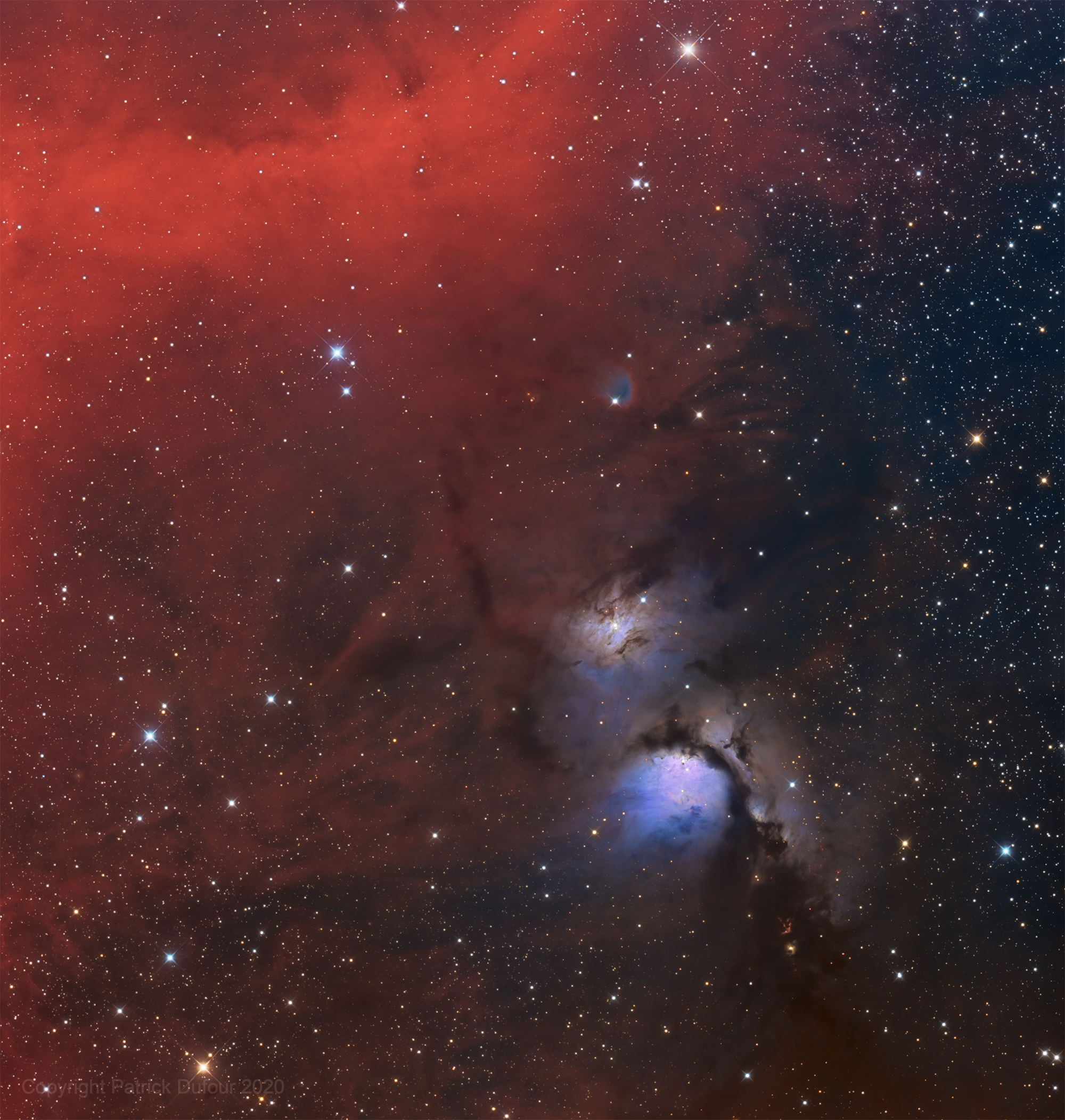
| Model | QHY600PH (Photographic Ver.) QHY600PH SBFL (Short Back Focal Length Ver.) |
| CMOS Sensor | SONY IMX455 |
| Mono/Color | Both Available |
| FSI/BSI | BSI |
| Pixel Size | 3.76um x 3.76um |
| Effective Pixel Area | 9576*6388(9600*6422 with overscan and optically black area) |
| Effective Pixels | 61.17Megapixels |
| Sensor Size | Full Frame (36mm x 24mm) |
| A/D Sample Depth | Native 16-bit (0-65535 greyscale) A/D |
| Full Well Capacity (1×1, 2×2, 3×3) | Standard Mode >51ke- / >204ke- / >408ke- Super Full Well Mode >80ke- / >320ke- / >720ke- |
| Frame Rate | Full Resolution: 4.0FPS (8-bit output) ; 2.5FPS (16-bit output) ROI: 7.2FPS@9600×3194, 22.5FPS@9600×1080, 28FPS@9600×768, 47FPS@9600×480, 160FPS@9600×100 |
| Readout Noise | 1.0e- to 3.7e- (Standard Mode) |
| Dark Current | 0.0022e-/p/s @ -20℃ 0.0046e-/p/s @ -10℃ |
| Exposure Time Range | 40us – 3600sec |
| Unity Gain* | 25 (PH Mode, or Extended Full Well Mode) 56 (High Gain Mode) *Learn more at the introduction of “Readout Modes”. |
| Amp Control | Zero Amplifer Glow |
| Firmware/FPGA remote Upgrade | Support via Camera USB port |
| Shutter Type | Electric Rolling Shutter |
| Computer Interface | USB3.0 |
| Built-in Image Buffer | 2GB DDR3 Memory |
| Cooling System | Dual Stage TEC cooler: – Long exposures (> 1 second) typically -35℃ below ambient – Short exposure (< 1second) high FPS, typically -30℃ below ambient(Test temperature +20℃) |
| Optic Window Type | AR+AR High Quality Multi-Layer Anti-Reflection Coating |
| Anti-Dew Heater | Yes |
| Telescope Interface | Support M54 or M48 (Combined with adapters ) |
| Back Focal Length | QHY600PH: 17.5mm+6mm (CAA) QHY600SBFL: 14.5mm(±0.2) *Learm more: https://www.qhyccd.com/adapters/ |
| Weigth | About 850g |
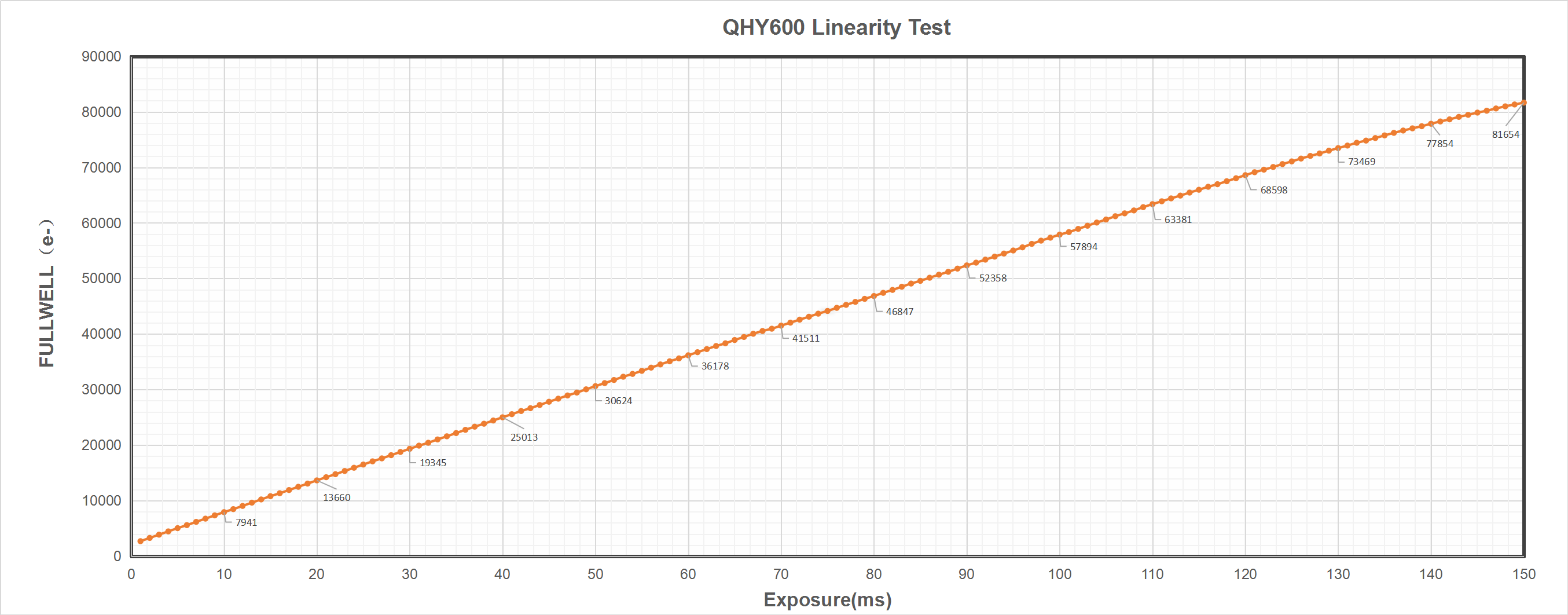
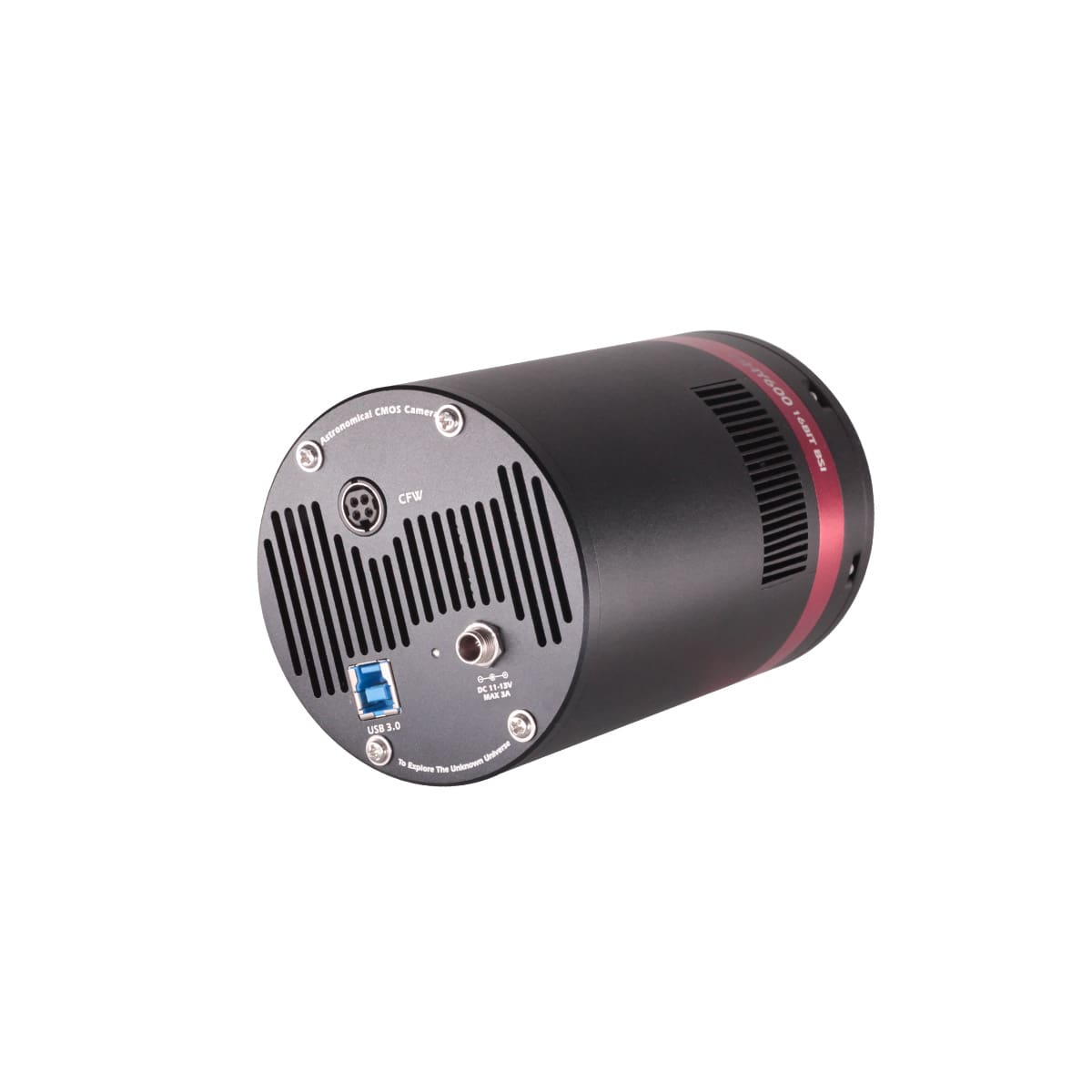
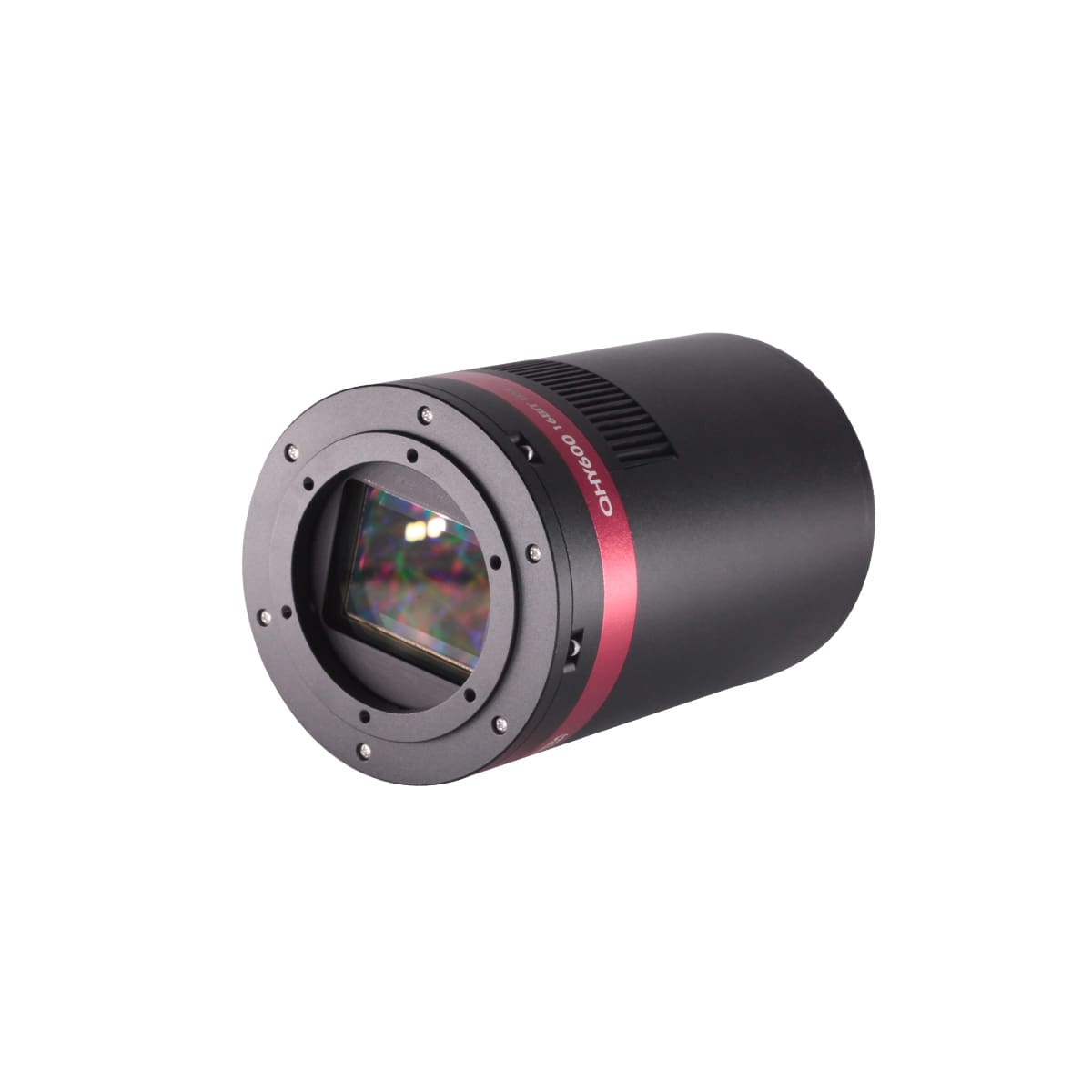
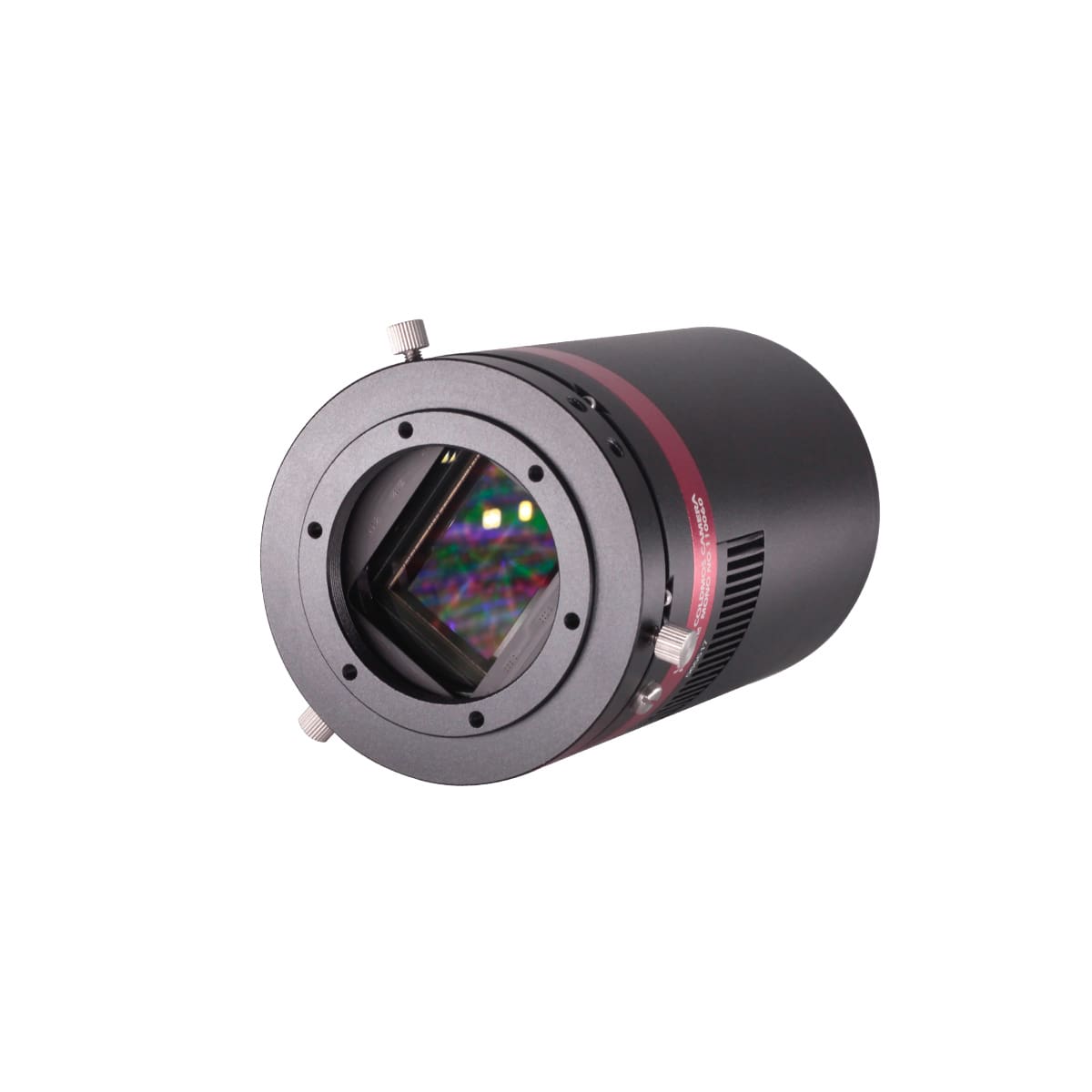
EDISLA Pre-Order: Source Anything

Research It
Find the product you want.

Talk to Us
Get expert guidance fast.

We Source It
Delivered within 4 weeks.

Enjoy It
Be happy with your gear.
Got a question?
what we get asked most often
Are the prices all-inclusive?
Yes. The price you see is the price you'll pay. All taxes are included. Free shipping on all orders.
What's the stock status of the products on your site?
We list only in-stock items on our website that can be shipped right away. Sold out products are out of stock, so you can't place an order.
Selected products are available for Preorder, with a guaranteed delivery within 30 days or your money back.
How fast do you ship?
We process and ship all orders within two business days. Shipping time is determined by the speed of the shipping partner.
Is there a guarantee on your products?
Yes. On top of the manufacturer's warranty, we also offer a Replacement Guarantee on all online orders. In the event that the product is defective or damaged during shipping, you will receive a replacement.
Can I cancel my order?
We'll refund you 90% if you cancel before dispatch. Cancellations after dispatch are complicated. Take a look at the our Policy here
What's your return policy?
We have strict return/refund policies as a company that deals with fragile products. Casual returns are not permitted. Items that are not damaged in transit or defective cannot be returned.So please take a moment to review our Refund Policy.
Could I order something that's out of stock or not listed?
If you are interested in ordering an out-of-stock item, click the "notify me" button. You will be notified when the item is back in stock.
To source a specific product for you, our team needs more information. Specific orders will be subject to case-by-case terms and conditions.





